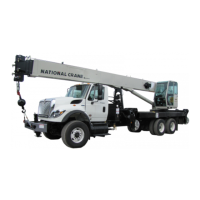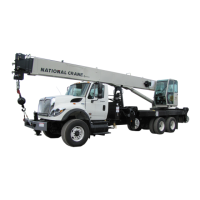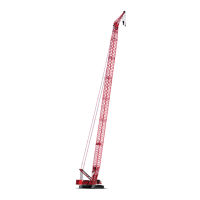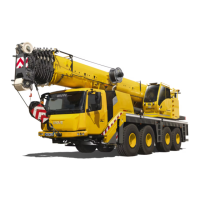HOISTS 14000 SERVICE MANUAL
5-8
Published 09-10-14, Control # 065-24
BLOCK-UP LIMIT CONTROL
General
A block-up limit (also called anti two-block device) is a two-
blocking prevention device which automatically stops the
load drum from hoisting and the boom (or luffing jib) from
lowering when a load is hoisted a predetermined distance.
DEFINITION: Two-blocking is the unsafe condition in
which the load block or the weight ball contacts the sheave
assembly from which either is suspended.
Two-blocking can result in failure of sheaves and wire
rope, possibly causing load to fall.
The block-up limit system consists of the following
components (see Figure 5-6
):
1. Normally closed limit switch assembly fastened at the
following locations:
a. Lower boom point
b. Upper boom point
2. Weight freely suspended by chain from each limit switch
actuating lever (weight encircles load line as shown).
3. Lift block fastened to load line or lift plates fastened to
load block.
Operation
See Figure 5-6 and Figure 5-7 for component identification.
For a complete wiring diagram of the system, see Boom
Wiring and Limits Drawing in Section 3 of this manual.
Block-Up Limit Control Deactivated
During normal operation, the weight overcomes spring force
and rotates the actuating lever away from the limit switch
lever. This action allows the limit switch to close the load
drum UP and boom DOWN electric circuits. Therefore, the
load can be hoisted and the boom can be lowered.
Block-Up Limit Control Activated
When the weight is lifted by the lift block or the lift plates,
spring force rotates the actuating lever against the limit
switch lever. This action causes the corresponding limit
switch to open the load drum UP and boom DOWN electric
circuits.
The load drum and boom/mast hoist pumps stroke to off. At
the same time, load drum and boom parking brakes apply to
stop load drum from hoisting and the boom from lowering.
Maintenance
Inspect and test the block-up limits weekly or every 40
hours of operation, as follows:
1. Lower the boom and jib onto blocking at ground level
and carefully inspect the following items:
a. Inspect each limit switch lever and actuating lever
for freedom of movement. Apply one-half shot of
grease to fitting on the actuating lever; wipe away
any excess grease.
b. Inspect each weight for freedom of movement on
the load line.
c. Inspect each weight, chain, shackle and connecting
pin for excessive or abnormal wear. Make sure
cotter pins for shackles are installed and spread.
d. Inspect entire length of each electric cable for
damage.
e. Check that electric cables are clear of all moving
parts on the boom and jib and that cables are
securely fastened to the boom and jib with nylon
straps.
f. Check that all plugs are securely fastened.
WARNING
Two-Blocking Hazard!
Block-up limit is a protective device designed only to
assist operator in preventing a two-blocking condition;
any other use is neither intended nor approved.
Block-up limit may not prevent two-blocking when load is
hoisted at maximum single line speed. Operator shall
determine fastest line speed that allows block-up limit to
function properly and, thereafter, not exceed that line
speed.
CAUTION
Avoid Machinery Damage!
To prevent two-blocking from occurring, do not operate
the crane until cause for improper operation and all
hazardous conditions have been found and corrected.

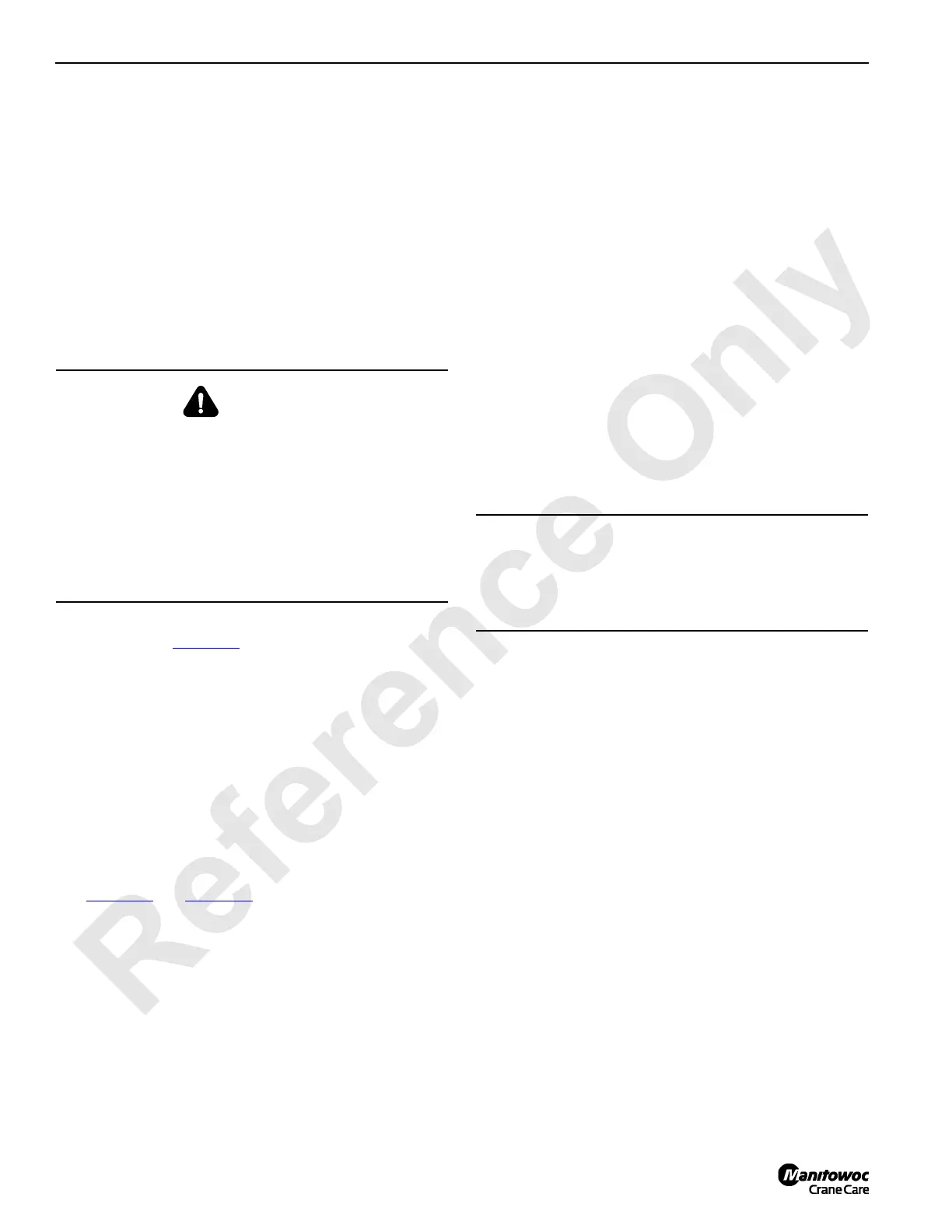